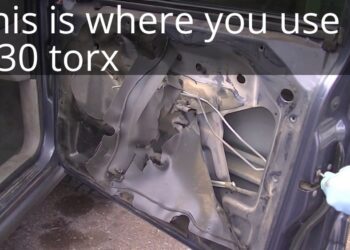BMW’s TPM (Tire Pressure Monitoring) system alerts drivers about tire pressure issues. A TPM malfunction can be frustrating and impact your car’s safety.
Understanding this issue helps in maintaining your vehicle better. Many drivers face TPM malfunctions in their BMWs. It’s a common issue that can cause confusion. The TPM system monitors tire pressure and alerts when levels drop. But, sometimes it malfunctions and gives false warnings.
This can happen due to sensor faults or environmental factors. Knowing the reasons behind these malfunctions is crucial. It helps in diagnosing and solving the problem efficiently. Ensuring your TPM system works properly is vital. It keeps your driving safe and your tires in good condition. In this post, we’ll explore the causes and solutions for TPM malfunctions. Let’s keep your BMW running smoothly.
Credit: x3.xbimmers.com
Common Causes Of Tpm Malfunction
If you’ve ever driven a BMW, you’re familiar with the car’s sophisticated technology. The Tire Pressure Monitoring (TPM) system is one of those advanced features that ensures your safety on the road. However, it can sometimes malfunction, leaving you puzzled. Understanding the common causes of TPM malfunction can save you time and possibly a trip to the mechanic.
Sensor Failure
One of the most frequent culprits behind TPM malfunction is sensor failure. The sensors inside your tires are exposed to harsh conditions. Think about the wear and tear they undergo every time you drive. Dirt, debris, and moisture can infiltrate the sensors, leading to inaccurate readings.
Imagine cruising down the highway, confident in your vehicle’s safety, only for your TPM system to light up unexpectedly. The sensor could be damaged or misaligned. Regular checks and cleaning can help prevent these issues.
Software Glitches
Just like your smartphone, the software running your car’s TPM system can glitch. Ever had a moment where your phone froze during a crucial call? Similar issues can occur with your BMW’s TPM system. Updates might be needed to keep the software running smoothly.
Have you ever ignored a software update notification? In cars, this can lead to malfunctions. Ensure your BMW’s system is up-to-date to avoid unnecessary stress.
Battery Issues
The sensors in your tires are powered by batteries. A dying or dead battery can disrupt the TPM system. Picture this: you’re ready for a road trip, but your TPM system alerts you to low tire pressure. This could be a sign that your sensor batteries are running low.
When was the last time you checked your sensor batteries? Regular battery replacement can prevent unexpected alerts and ensure your TPM system functions correctly.
Understanding these causes can empower you to tackle TPM issues head-on. Have you experienced TPM malfunction in your BMW? Share your stories and tips in the comments below. Your experience might just help someone else!
Identifying Tpm Malfunction Symptoms
BMW’s TPM malfunction can cause tire pressure warnings. Drivers might notice inconsistent readings or alerts despite correct tire pressure. Promptly addressing these symptoms ensures safe and efficient driving.
Identifying TPM Malfunction Symptoms in your BMW is crucial for safe driving. The Tire Pressure Monitoring (TPM) system alerts drivers to potential tire issues. Understanding these symptoms helps maintain vehicle performance and safety. Below are key indicators of TPM malfunction.Warning Lights
Warning lights are the first sign of TPM issues. If the TPM system detects a problem, a light appears on the dashboard. This light often resembles a horseshoe with an exclamation point. It indicates low tire pressure or a system fault. Ignoring this light can lead to unsafe driving conditions.Erratic Readings
Erratic readings might signal a TPM malfunction. Check if tire pressure readings fluctuate wildly. This inconsistency can confuse drivers and lead to incorrect tire inflation. Regularly monitor tire pressure for accuracy. Erratic data may suggest sensor problems or a need for recalibration.Loss Of Signal
Loss of signal is another symptom of TPM malfunction. The TPM system relies on sensors to communicate tire pressure data. If the signal drops, the system can’t report accurate information. This loss might stem from sensor damage or electrical issues. Resolving signal loss quickly prevents further complications.Diy Troubleshooting Techniques
Experiencing a BMW TPM malfunction can be frustrating. Many drivers prefer to tackle issues themselves. DIY troubleshooting can save time and money. Let’s explore some effective techniques.
Visual Inspection
First, check the tire pressure of each wheel. Look for obvious signs of damage. This can include punctures or worn-out tread. Ensure the valve caps are tightly secured. Inspect the sensor area for visible issues. Dirt or debris might block sensor signals. A quick clean can sometimes solve the problem.
Reset Procedures
Resetting the TPM system can often clear minor glitches. Start by turning the ignition to the “on” position. Avoid starting the engine. Use the iDrive controller to access the “Settings” menu. Navigate to the “Tire Pressure Monitor” section. Follow the prompts to reset the system. Afterward, drive at a steady pace for 10 minutes. This allows the system to recalibrate.
Battery Replacement
Dead sensor batteries can trigger a TPM warning. Each tire sensor has a small battery. Over time, these batteries may lose power. Replacing them can restore proper function. Consult the vehicle’s manual for battery specifications. If unsure, seek professional assistance. Always ensure new batteries are securely installed.
Professional Diagnosis Methods
Professional diagnosis methods for BMW TPM (Tire Pressure Monitoring) malfunction are essential for keeping your vehicle safe and efficient. When you notice the warning light on your dashboard, it’s crucial to understand the steps professionals take to address the issue. Let’s delve into the advanced tools, sensor calibration, and software updates that specialists use to diagnose and resolve TPM malfunctions.
Advanced Tools
Technicians rely on advanced diagnostic tools to identify TPM issues accurately. These tools offer a detailed look into your vehicle’s system, pinpointing faults that might be invisible to the naked eye. Imagine having a magnifying glass that reveals hidden cracks in your car’s setup—these tools act in a similar way, ensuring nothing is overlooked.
Why should you care about these tools? They help in quickly identifying problems, saving you time and potential repair costs. Have you ever wondered if your mechanic is just guessing? With these tools, guesswork is eliminated, providing precise results.
Sensor Calibration
Sensor calibration is a critical step in resolving TPM malfunctions. Technicians adjust the sensors to ensure they’re accurately measuring tire pressure. This process guarantees that the readings you see are correct, preventing false alarms that could lead to unnecessary worry.
Think about it: Have you ever felt frustrated by incorrect information? Proper calibration ensures that what you see is what’s truly happening with your tires. It’s like setting the right time on your watch; you want to be sure it’s accurate.
Software Updates
Software updates play a significant role in maintaining TPM system functionality. Professionals update the vehicle’s software to fix bugs and improve system performance. This is akin to your phone receiving updates to enhance its features and security.
Are you keeping your car’s software current? If not, you might miss out on improvements that could prevent future malfunctions. Regular updates keep your TPM system running smoothly, just like tuning up an instrument to keep it in harmony.
Effective Fixes For Tpm Issues
BMW TPM malfunction issues can disrupt your driving experience. Resetting the system often resolves minor glitches. If problems persist, check tire pressure and sensors for faults.
Dealing with BMW’s Tire Pressure Monitoring (TPM) malfunction can be frustrating, but there are practical solutions you can try to fix these issues. Whether you’re a seasoned car enthusiast or just someone who wants to avoid a trip to the mechanic, understanding these fixes can save you time and money. Let’s dive into three effective fixes for TPM issues that you can consider: sensor replacement, software reprogramming, and system overhaul.Sensor Replacement
Sometimes, the TPM sensor in your BMW may fail due to wear and tear. This is common, especially if your vehicle has clocked many miles. Replacing the sensor is a straightforward solution. If you’ve ever had a sensor replaced, you know it’s not as complicated as it sounds. You can purchase a new TPM sensor from a trusted auto parts store. Make sure to follow the manufacturer’s instructions to ensure proper installation. Does your warning light still flash after changing the sensor? It might be due to a faulty connection, so double-check that all components are securely in place.Software Reprogramming
Software glitches can sometimes cause TPM malfunctions. A simple reprogramming might resolve these issues. In many cases, you can reset the system from your dashboard menu. I once had a problem with my TPM light staying on even after inflating the tires. A quick visit to the dealership for software reprogramming solved it in no time. You might find that a software update is needed, which often includes fixes for known issues. Consider using a diagnostic tool if you want to tackle this at home. They’re easy to use and can help you identify software-related problems.System Overhaul
If sensor replacement and software reprogramming do not fix the problem, it may be time for a system overhaul. This involves replacing or repairing multiple components of the TPM system. Have you ever tried a more comprehensive approach to a recurring problem? Sometimes it’s necessary, especially if your BMW is older or has been through harsh driving conditions. It might sound daunting, but think of it as an investment in your car’s health. Consult a professional mechanic to ensure everything is working harmoniously. These fixes can help you tackle TPM issues effectively. Have you tried any of these methods before? Share your experiences or tips in the comments below.Credit: f30.bimmerpost.com
Preventive Maintenance Tips
Regularly check your BMW’s tire pressure monitoring system (TPM) for errors. This keeps your tires in top condition. Reset the TPM after tire changes or rotations to prevent malfunctions.
Ensuring your BMW’s Tire Pressure Monitoring (TPM) system functions properly is crucial for both safety and performance. Small preventive measures can save you from unexpected headaches on the road. Let’s dive into some simple yet effective maintenance tips that you can easily incorporate into your routine.Regular Check-ups
Regular check-ups are your best defense against TPM malfunctions. Schedule a monthly inspection of your TPM system. It might sound frequent, but early detection can prevent costly repairs. During these check-ups, look for any warning signs. A flickering TPM light or any unusual tire wear can indicate a problem. Addressing these early can keep your vehicle running smoothly. Don’t wait for a problem to arise. Make it a habit to review your car’s manual and follow recommended maintenance schedules.Proper Tire Care
Proper tire care goes hand-in-hand with a healthy TPM system. Keep your tires inflated at the recommended pressure levels. Under-inflated tires can trigger false TPM warnings. Rotate your tires regularly. This prevents uneven wear and ensures the TPM system receives accurate readings. Remember, even tire wear is key to accurate pressure monitoring. Examine your tires for any signs of damage. Small punctures or sidewall bubbles can lead to serious issues. Address these immediately to avoid further complications.Keeping Software Updated
Your BMW’s TPM system relies on software to function optimally. Check for software updates regularly. Manufacturers often release updates to fix bugs and improve performance. Updating software might sound daunting, but it’s simpler than you think. You can often complete this process through your car’s infotainment system or during a service appointment. Consider it like updating your phone. It ensures everything runs smoothly and efficiently. Have you checked if your BMW’s software is up to date lately? Taking these preventive steps not only enhances safety but also extends the lifespan of your TPM system. What’s your strategy for maintaining your vehicle’s health?Understanding Bmw’s Tpm Technology
BMW’s Tire Pressure Monitoring (TPM) system is crucial for vehicle safety. It alerts drivers to changes in tire pressure. This system prevents accidents and enhances driving performance. Understanding how TPM technology works is vital for BMW owners. This knowledge helps in maintaining optimal tire pressure levels and avoiding TPM malfunctions.
System Components
The TPM system consists of several key components. Tire pressure sensors are installed in each wheel. These sensors continuously monitor tire pressure levels. The electronic control unit processes data from the sensors. It then communicates with the vehicle’s dashboard. The dashboard displays alerts if tire pressure deviates from the norm. This setup ensures drivers are aware of tire conditions at all times.
How It Works
TPM technology uses radio frequency signals. Sensors transmit pressure data to the control unit. The unit evaluates this data against preset thresholds. If pressure falls outside these limits, alerts are triggered. Drivers receive warnings on their dashboard. This real-time monitoring helps prevent tire-related issues. Properly inflated tires ensure better fuel efficiency and handling.
Common Challenges
Despite its benefits, TPM systems can face challenges. Sensor malfunction is a common issue. Dust or moisture can affect sensor accuracy. Battery depletion in sensors also causes problems. These factors lead to false alerts or no alerts. Regular maintenance of the TPM system is essential. Ensuring sensor cleanliness and battery replacement helps maintain functionality.
Credit: f10.5post.com
Advantages Of A Functional Tpm System
The advantages of a functional Tire Pressure Monitoring (TPM) system in your BMW are numerous and can significantly enhance your driving experience. A well-maintained TPM system not only ensures optimal tire pressure but also offers crucial safety and performance benefits. Ignoring a TPM malfunction could lead to unnecessary risks and expenses, which no driver wants to deal with. Let’s explore why keeping your TPM system in top shape is a smart move for you and your vehicle.
Safety Benefits
Your BMW’s TPM system is a silent guardian of safety on the road. Correct tire pressure reduces the risk of blowouts, which can cause serious accidents. Imagine driving at high speed and suddenly losing control because of a burst tire. That’s a nightmare no one wants to experience. With a functional TPM system, you’re alerted to any pressure drop, so you can address issues before they escalate. Are you willing to compromise safety for something as simple as a tire pressure check?
Enhanced Performance
Performance enthusiasts know that a car’s handling and fuel efficiency depend heavily on tire pressure. Under-inflated tires can lead to sluggish response times and increased fuel consumption. If you’ve ever wondered why your BMW isn’t delivering the power it’s known for, your tire pressure could be the culprit. A properly working TPM system ensures that your vehicle performs at its peak by maintaining the right pressure. This means smoother rides and better handling, making your driving experience more enjoyable.
Cost Savings
No one likes unexpected expenses, especially when it comes to car maintenance. Tires with incorrect pressure wear out faster, leading to frequent replacements. This is an expense that can easily be avoided with a functional TPM system. By ensuring your tires are always in good shape, you save money in the long run. Why spend on new tires when a simple system check can help you avoid that? Plus, better tire health means improved fuel efficiency, which translates to more savings at the pump.
Keeping your BMW’s TPM system functional is not just about avoiding malfunctions; it’s about optimizing your driving experience. So, when was the last time you checked your TPM system? Taking a few minutes to ensure it’s working could save you a world of trouble down the road.
Frequently Asked Questions
How Do You Fix A Tpm Malfunction?
To fix a TPM malfunction, update the BIOS and TPM drivers. Clear TPM via Windows Security settings. Ensure your system’s firmware supports TPM. Regularly check for updates to prevent future issues. If problems persist, consult technical support or a professional technician for assistance.
How Much To Fix Tpm Malfunction Bmw?
Repairing a BMW TPM malfunction typically costs between $150 to $400. Prices vary based on location and dealership. Always consult your mechanic for an accurate quote tailored to your specific model. Regular maintenance can help prevent future issues and additional costs.
How To Reset The Tpm On A Bmw?
Turn on your BMW without starting the engine. Navigate to “Vehicle Status” on the iDrive menu. Select “TPM” or “Tire Pressure Monitor”. Choose “Reset” and confirm. Drive your car to complete the reset process. Ensure tires are at the correct pressure before starting.
Why Is My Tpms Light On But Tires Are Fine?
The TPMS light might be on due to sensor malfunction, a dead battery, or interference. Check sensor condition and reset the system.
What Causes A Bmw Tpm Malfunction?
A faulty sensor or low battery can cause TPM malfunction. Sensor damage is another possibility.
Conclusion
Understanding BMW’s TPM malfunction saves time and stress. Regular checks prevent issues. Follow maintenance tips for smooth driving. TPM alerts need quick action. Ignoring them risks safety. Drive confidently with a well-maintained system. A functioning TPM enhances road safety. Reduce breakdowns with timely repairs.
Stay informed about your car’s health. Use trusted mechanics for repairs. Clear alerts mean safer journeys. Your BMW deserves the best care. Keep systems working efficiently. Enjoy peace of mind on every drive. Prioritize vehicle care for lasting performance. Remember, a healthy car equals happy travels.

















